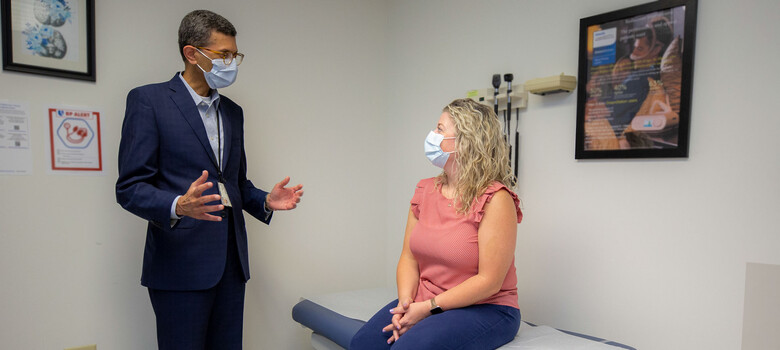Robot-Assisted Stereoelectroencephalography (SEEG)
SEEG is also used to pinpoint where a seizure starts. While you are under general anesthesia, neurosurgeons will guide a robotic arm to make tiny holes in your skull through which small electrodes are placed in the brain. This takes about two hours. You’ll recover outside of the operating room and remain in the hospital for about a week. During this time, the electrodes will monitor your brain activity to identify where seizures begin. After a seizure focus is determined, the electrodes are surgically removed, and you’ll remain in the hospital for two to three days to receive antibiotics. Compared with a craniotomy (which requires a larger opening in the skull), the robotic-assisted procedure is quicker and better tolerated. Stereo EEG is ideal for the most challenging cases of epilepsy. In conjunction with SEEG, doctors may be able to produce a 3D model of your brain to better understand where depth electrodes are in relation to each other and in relation to important brain structures.
Subdural Electrodes
Subdural strip or grid electrodes are surgically placed on the surface of the brain and are used when the seizure focus is difficult to pinpoint. Also, your epileptologist and neurosurgeon can use these electrodes to electrically activate parts of your brain for mapping. As with robot-assisted SEEG, monitoring is usually done for several days so that seizures can be recorded.
Brain Mapping
Brain mapping identifies vital areas in your brain responsible for movement, sensation, language, and vision. This lowers the risks associated with epilepsy surgery. First, a neurosurgeon will remove a portion of your skull (a craniotomy) to implant electrodes in or on your brain while you are under general anesthesia. You will recover from this surgery for a day or two in the hospital. Once the electrodes are in place, the mapping (which takes one to two hours) can be done while you are awake or under general anesthesia, and either in the operating room or in our specialized epilepsy monitoring unit (EMU), depending on what functions your doctors are testing. In both instances, brief electrical pulses will pass through the implanted electrodes, which may cause mild responses like a muscle jerk or tingling. You may also temporarily (for seconds) be unable to perform certain tasks, like speaking.
Wada Test
Also known as the intracarotid amytal test, this is used to determine vital brain functions on the left versus right side of the brain. A neuroradiologist will administer a short-acting anesthetic into your right or left carotid artery, effectively putting one side of your brain to sleep for five to ten minutes. During this time, doctors ask questions to test your language, speech, and memory. Then the procedure is repeated on the other side of the brain. The entire procedure lasts about two or three hours. After a brief recovery period, you should be able to go home the same day.

